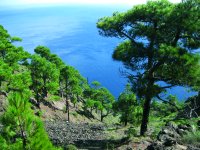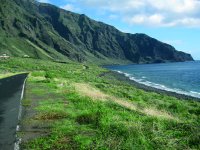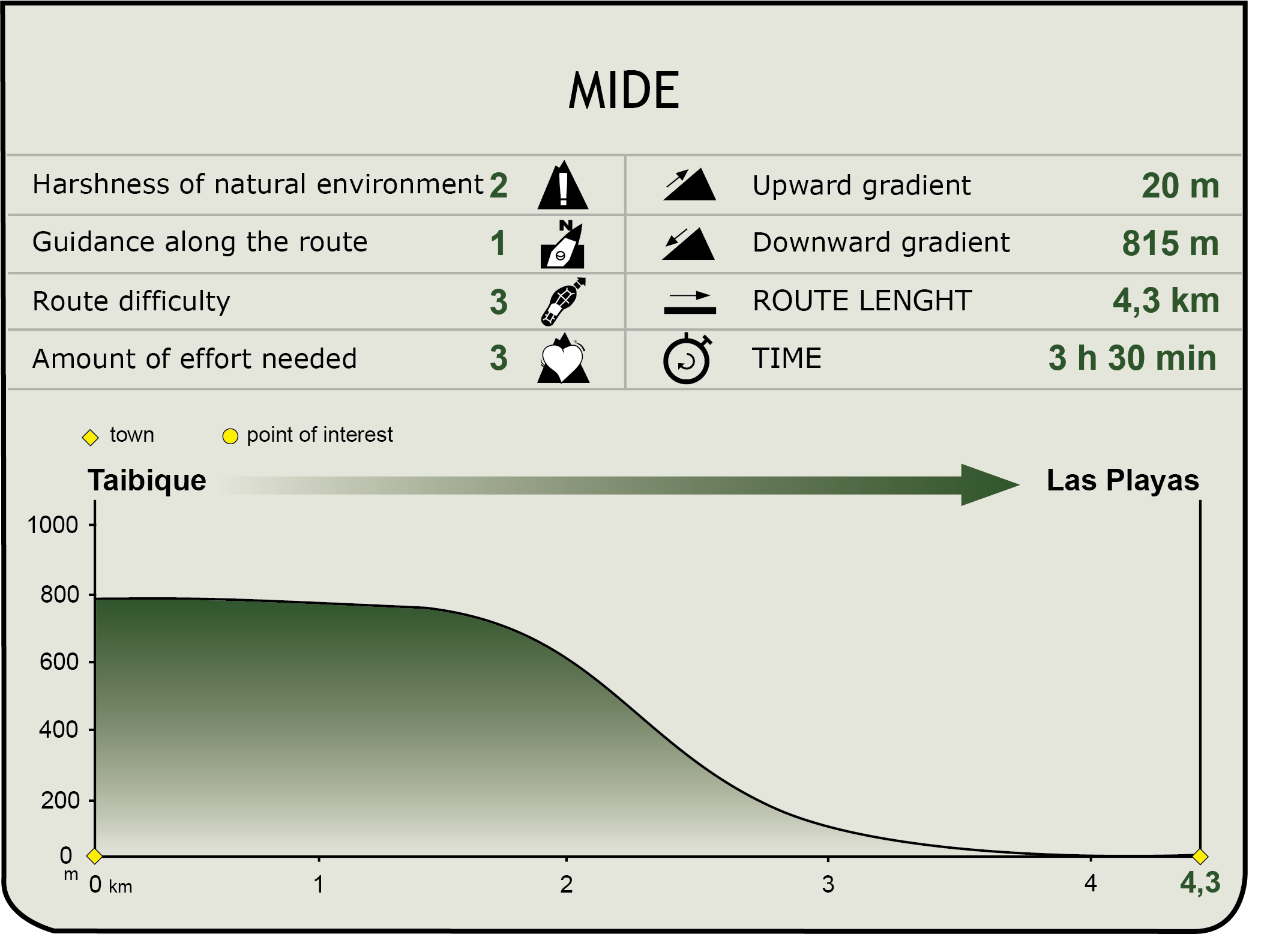Stage 5: El Pinar - Las Casas- Las Playas
Description

Towards Roque de la Bonanza
Continuing the trail through the municipality of El Pinar, the path goes between Taibique and Las Casas to reach the top of the Monumento Natural de Las Playas (Las Playas Natural Monument) from where we begin to work our way down a very steep slope until we come to the east coast of the island, where we see the well-known Roque de la Bonanza, one of the representative symbols of the island of El Hierro.

The distance between the two villages that make up the municipality of El Pinar – Taibique and Las Casas - is just a kilometer. From the main square of Taibique, along the road that links both parts of the municipality, we enter the neighborhood of Las Casas, a traditional, ancient hamlet where you can still find interesting samples of traditional domestic architecture and community infrastructures.
Once in Las Casas, we will pay attention to the directional signs along different streets until we reach the farm lands located at the south of the village. The trail goes through several of these farms in a southerly direction until it reaches the top of Monumento Natural de Las Playas (Las Playas Natural Monument), some 800 m above sea level. From there, we begin to descend along a very steep and winding path toward the east coast of the island. During the descent, there are magnificent views of both the coastline and the Monumento Natural de Las Playas.

During the first part of the trail we will be surrounded by Canary Island pine (Pinus canaríensis) as well as one of the species of shrub that is usually associated with these pines: the rock rose or “amagante” (Cistus symphytifolius). As the path loses altitude, we will also leave behind us this tree canopy and go into a rocky terrain more congenial to the Canary Island spurge (Euphorbia canaríensis) and the tabaiba or warty spurge (Euphorbia sp.), with the added presence of some scattered Canary Island junipers (Juniperus turbinata ssp. canaríensis).
As we begin to see some houses, we notice that this is the end of the descent and the beginning of a paved road that will allow us to walk parallel to the coastline and appreciate the full magnitude of the high walls covered by rock vegetation, on one side of the road, and the famous Roque de Bonanza in the background.
At the other end of the beach, where Roque de Bonanza (the volcanic plug of Bonanza) rises, we get to the parador or tourist hotel of El Hierro, where this stretch of the trail ends. The hotel stands in an idyllic spot, between the edge of the sea and the volcanic mountains, which is one of the best places to enjoy the calm of the ocean and the serenity of this secluded spot.
Profile

MIDE (Method for the Information of Excursions)
Featured
Further information
El Monumento Natural de Las Playas
The Monumento Natural de Las Playas (Natural Monument Las Playas) consists of a magnificent semicircular, rugged, structure – in the shape of an amphitheater – with a diameter of about 6 km and a maximum altitude of 1,100 m at Risco de los Herreños. This escarpment – of great geological and geomorphological interest – defines an inner hollow on the north, west and south, and is open to the sea only on its east-southeast quadrant.
This protected natural area, of outstanding scenic beauty owing to the spectacular nature of the region as a whole, has a total area of 984.8 ha in the southeast of the island.
The Natural Monument Las Playas, listed in Red Natura 2000 as a Site of Community Importance (SCI), is a good example of well-preserved rupiculous (rock-dwelling) habitats and of high floral diversity, which includes some threatened endemic species, as the Canary daisy (Argyranthemum sventenii) and the tajinaste of El Hierro (Echium hierrense).
This Natural Monument has three marine Roques or volcanic plugs, among which Roque de la Bonanza stands out for its unique features.
Roque de la Bonanza
One of the most famous icons of the island of El Hierro is situated on the east coast of the island, in the bay of Las Playas: Roque de la Bonanza, a quaint geological formation that rises from the ocean forming a unique rocky arc. It is located about 15 m from the coastline, which makes it very easy to access.
Roque de la Bonanza is an important scenic landmark within the Natural Monument Las Playas because of its beauty and location, which have turned it into one of the representative symbols of the island of El Hierro.



